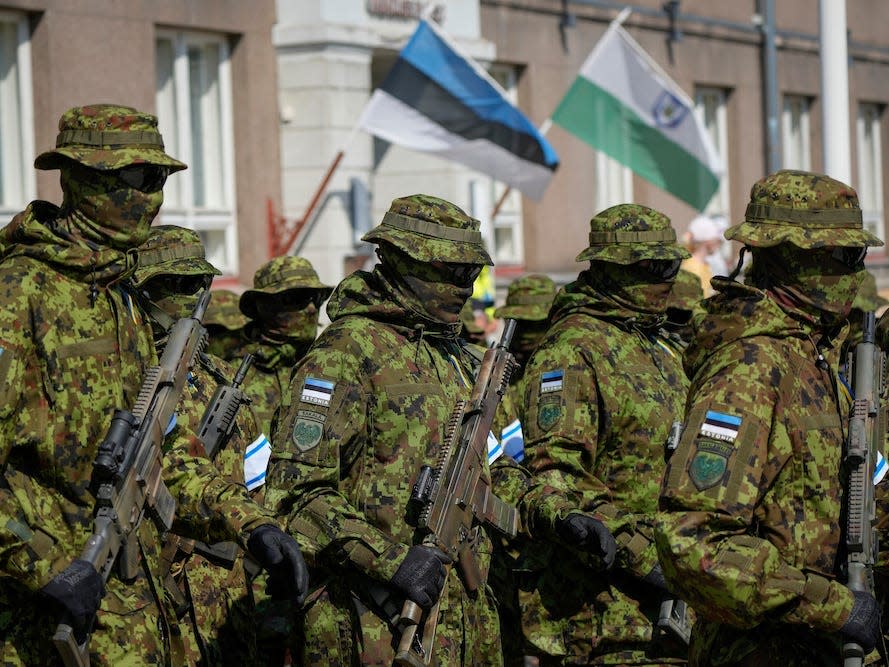Estonia says it could hold out against a Russian attack 'for a couple of weeks' before NATO arrives

Estonia could resist a Russian attack for two weeks before NATO support arrives, a top commander said.
The Baltic states have ramped up their defense amid fears Russia's aggression could turn on them.
Estonia shares a border with Russia. In 2024, its defense spending will be more than 3% of its GDP.
Estonia could resist a Russian attack for two weeks before NATO support came in, a top Estonian commander said.
The NATO country, which shares a land border with Russia, "would be able to resist an invasion for a couple of weeks," Colonel Mati Tikerpuu, the chief of one of Estonia's two army brigades, told El País.
He said this would be "long enough until allied reinforcements arrive."
Estonia, which has a population of just 1.4 million, says its defense spending in 2024 will be more than 3% of GDP — far beyond most NATO countries' contributions — amid deteriorating relations with Russia and alarm at the full-scale invasion of Ukraine.
As a proportion of GDP, Estonia has also given Ukraine more military aid than any other country.
At the same time, American, British and French troops are a frequent presence at the training base Tikerpuu spoke from, some 10 miles from the border with Russia, the Spanish outlet reported — a sign of NATO's boosted approach to the region.
In an interview in February, Tikerpuu told ERR, Estonia's national broadcaster, that "nothing can be excluded" when it comes to preparing for a possible Russian attack.
The war in Ukraine has given Estonia something of a preview, which has helped it prepare its own forces' priorities, he told the outlet.
Drones and artillery would be central to any conflict, he said, noting that Russia still favors massed "meat wave" attacks over the expense of using its high-precision weapons.
Despite ramped-up military spending, Estonia's armed forces are limited; its army has no main battle tanks, and its single operational military air base, near Tallinn, has no combat aircraft.
In 2022, its defense department announced the purchase of six US-made HIMARS multiple rocket launcher systems, to be delivered this year.
A recent Estonian intelligence report estimated that Russia plans to station almost 40,000 troops near the border over the coming years, El País reported.
That figure dwarfs Estonia's own active-duty force of 4,200 troops — although it has just under 40,000 trained reservists, a product of the country's conscription policy.
Estonia's Prime Minister Kaja Kallas told Business Insider last year of her concern that Russia is "the most direct threat to European security right now."
In March, the US approved a $228 million defense aid package for Estonia and its neighbors Lithuania and Latvia, aimed at fast-tracking military infrastructure.
In February, the former Soviet states agreed to build a new bunker defense line along their collective 1,000-mile border with Russia, with reserve forces readied to deploy additional defenses such as mines and "dragon's teeth" anti-tank pyramids at short notice.
Estonia is also part of a six-country coalition building a "drone wall" protecting their borders, although few details of this have emerged.
The countries have warned of impending Russian hybrid attacks, attacks that disrupt but fall short of overt military action.
Read the original article on Business Insider


